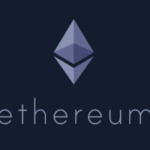Ethereum’s Layer 2 Solutions Surpass $51 Billion: Is ETH’s Future at Risk?

The world of cryptocurrency is ever-changing, and Ethereum, a cornerstone of this realm, is not immune to the shifts happening around it. Layer 2 (L2) solutions are seeing explosive growth, reaching a total value locked (TVL) of $51.5 billion. But while this success is impressive, it raises questions about the future of Ether. How are these advancements reshaping the Ethereum ecosystem, and is Ether at risk? Let’s unravel the details.
The Surge of L2 Solutions: A Game-Changer
L2 solutions like Arbitrum and Base are pushing the boundaries of Ethereum’s scalability. By allowing transactions to occur on secondary chains, they are reducing fees and transaction times on the primary network. This shift has led to a remarkable 205% increase in TVL over the past year, jumping from $16.6 billion in November 2023 to over $51 billion today.
Arbitrum takes the lead in this space, holding 35% of the L2 TVL at $18.3 billion, while Base follows closely behind with a 22% share, boasting high transactions per second (TPS) rates and a surge in interest around memecoins. These numbers reflect the immense enthusiasm from investors for these solutions, seen as crucial for Ethereum’s future.
While these developments have resulted in more stable transaction fees on L2, potentially making them even more attractive, they also come with implications. The strategic question that arises is whether L2 can coexist with Ether without impacting its value significantly.
Ether’s Position Amid L2 Expansion
Despite the efficiency of L2 solutions, some experts view them as potential threats to the Ethereum ecosystem. By centralizing activities on secondary chains, these solutions could potentially weaken the main network, which could, in turn, impact the valuation of Ether.
For now, Ether remains integral to Ethereum, used for transactions and fees on the primary network. However, with the increased adoption of L2 solutions, Ether could face a reduction in demand. This raises a dilemma for developers: should they prioritize mass adoption of L2 even if it comes at the expense of Ether’s price?
Data suggests a delicate balance exists. As the TVL of L2 skyrockets, Ether’s price remains stagnant, struggling to keep up with the rapid pace of L2 growth. This situation poses a critical question: could the rise of L2 solutions lead to a lasting decoupling between Ethereum and its native token?
The evolving landscape of Ethereum and L2 solutions signifies a period of transformation for the cryptocurrency realm. While the potential risks are evident, so are the opportunities for innovation and growth. As the crypto universe continues to expand, staying informed and adaptive is key to navigating this dynamic landscape.




